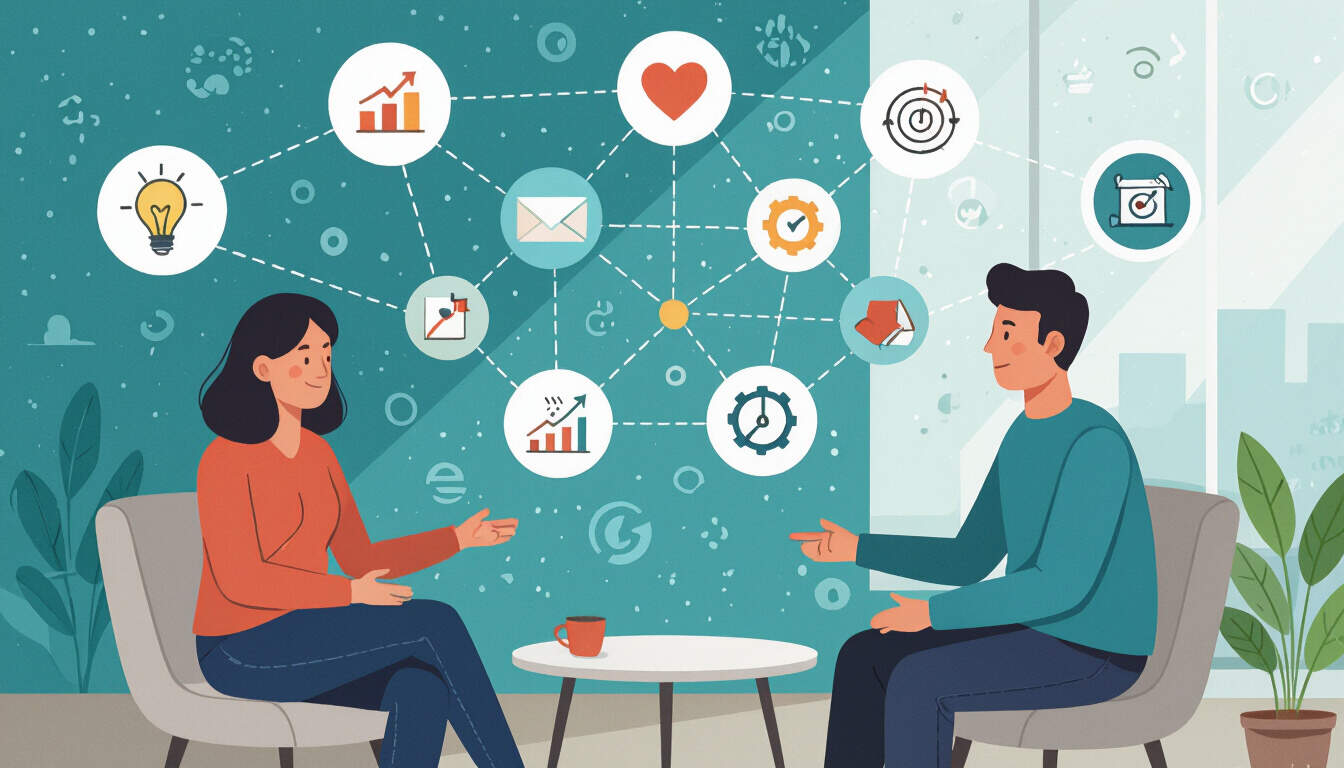Adaptive Learning Approaches and Their Connection to Second-Order Thinking and Feedback Loops
 by Verner Mayer
by Verner Mayer
Adaptive learning approaches enhance personal and professional growth by incorporating second-order thinking and feedback loops. These methods allow individuals to anticipate outcomes and adjust strategies, making them essential for cognitive development in various fields.

Adaptive learning approaches represent a key method for improving how people acquire knowledge and skills. These strategies adjust based on individual progress, making them ideal for dynamic environments.
Second-order thinking involves looking beyond immediate results to consider longer-term effects. For example, in education, a student might not just focus on passing a test but also think about how that knowledge influences future career opportunities. This deeper level of analysis helps in creating more effective learning paths.
Feedback loops are cycles where outputs influence inputs, creating ongoing adjustments. In adaptive learning, these loops provide data on performance, allowing systems or individuals to refine their methods. A teacher might use student feedback to alter lesson plans, ensuring better engagement over time.
The Role of Second-Order Thinking in Adaptive Learning
In adaptive learning, second-order thinking encourages anticipation of challenges. Professionals in business often apply this by evaluating how a decision today affects team dynamics later. By doing so, they build strategies that evolve with changing circumstances.
Students benefit from second-order thinking by questioning the implications of their study habits. If a particular technique leads to short-term gains but long-term burnout, recognizing this pattern can prompt a shift to more sustainable practices. Feedback loops then reinforce these changes by providing measurable results.
Understanding Feedback Loops in Adaptive Contexts
Feedback loops operate in two main ways: positive and negative. Positive loops amplify effects, such as when consistent practice leads to rapid skill improvement, motivating further effort. Negative loops stabilize systems, like when poor results trigger a reassessment of methods.
In professional settings, feedback loops help managers adapt team processes. If a project falls behind, analyzing the loop might reveal inefficiencies, leading to timely corrections. For curious individuals, these loops foster personal development by turning experiences into lessons that guide future actions.
Adaptive learning systems, such as online platforms, use feedback loops to personalize content. As users interact, the system adjusts difficulty levels based on responses, creating a tailored experience without needing constant oversight.
Integrating Second-Order Thinking and Feedback Loops
When combined, second-order thinking and feedback loops form a powerful framework for adaptive learning. This integration allows for proactive adjustments rather than reactive ones. In cognitive processes, thinking about potential outcomes helps in designing feedback mechanisms that are more insightful.
For instance, a professional preparing for a presentation might consider not only the immediate audience reaction but also how the content could influence industry perceptions. Second-order thinking here ensures that feedback from the event shapes future presentations effectively.
In personal development, individuals can apply these concepts to habits. Tracking daily routines through journals creates feedback loops that reveal patterns, while second-order thinking assesses the broader impact on well-being.
Practical Applications in Various Fields
In professional environments, adaptive learning approaches with feedback loops enhance decision-making. Employees in tech fields might use software that analyzes performance data, allowing for real-time adaptations in workflows.
Students in academic settings can employ these strategies for better outcomes. By reviewing exam results and thinking about underlying causes, they adjust study methods, turning potential failures into opportunities for growth.
Curious individuals exploring systems thinking might experiment with simple exercises. For example, maintaining a reflection log that documents decisions and their consequences builds awareness of feedback loops in everyday life.
- Use apps to track progress and identify patterns.
- Reflect weekly on decisions to apply second-order thinking.
- Collaborate with peers to gain external feedback.
Benefits for Cognitive Processes and Systems Thinking
The advantages of adaptive learning through these mechanisms are significant. They promote resilience by encouraging continuous improvement and adaptability. In cognitive processes, this means developing a mindset that values depth over speed.
Systems thinking benefits as individuals learn to see interconnections. Recognizing how actions in one area affect others fosters a holistic view, essential for complex problem-solving.
Overall, adaptive learning approaches, when paired with second-order thinking and feedback loops, offer a structured way to navigate personal and professional challenges. This method not only aids in immediate goals but also supports long-term success.
By fostering these practices, anyone can enhance their ability to learn and grow in meaningful ways.
